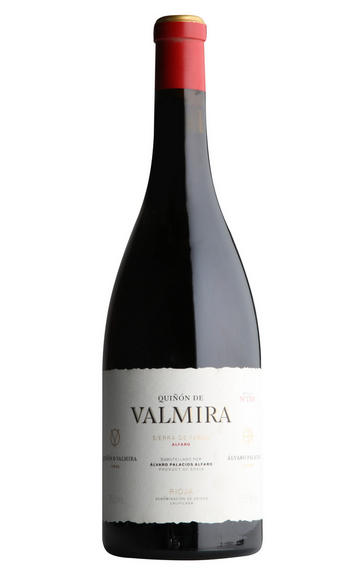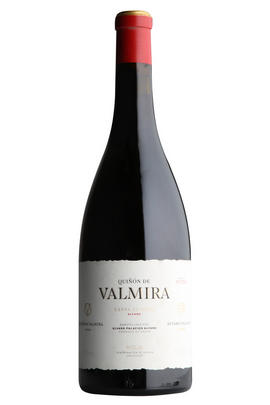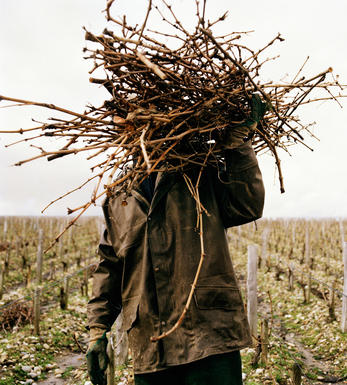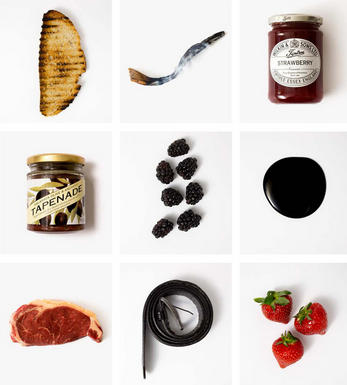
2019 Quiñón de Valmira, Álvaro Palacios, Rioja, Spain

Critics reviews
The single-vineyard 2019 Quiñón de Valmira is made with Garnacha (and 10% other traditional varieties) grown at 616 meters in altitude, fermented with some full clusters with indigenous yeasts in oak vats and matured in oak foudres and bocoyes for 16 months. This is 'only' 13.5% alcohol (lowish for Garnacha), so I asked Palacios how this wine can be so low in alcohol in such a warm and dry year. He explained to me that the red soils are only 20 centimeters deep, and below that, it's all white. Those calcium carbonate soils are cold soils, and the wines are also pale and low in alcohol but with fully developed flavors and aromas. The wines come through as lively, vibrant and deep, with pungent flavors, incredible finesse, with the red fruit from Garnacha intermixed with limestone that gives it the incredible elegance and tastiness, with an almost salty finish. This has more fruit than flowers, different from the 2018 but at the same quality level. It was bottled in April 2021, and 3,914 bottles, 110 magnums and 22 double magnums were produced.
Luis Gutiérrez, Wine Advocate (Jul 2021)
Plenty of sweet berries, such as strawberries and plums with some citrus. Full-bodied with round tannins and a fresh finish. Layered and intense, but there’s lovely purity of fruit and a delicious, juicy finish. So attractive now, but better in two or three years.
James Suckling, jamessuckling.com (Oct 2021)
About this WINE

Alvaro Palacios, Alfaro

Grenache/Garnacha
Grenache (Noir) is widely grown and comes in a variety of styles. Believed to originate in Spain, it was, in the late 20th century, the most widely planted black grape variety in the world. Today it hovers around seventh in the pecking order. It tends to produce very fruity, rich wines that can range quite widely in their level of tannin.
In many regions – most famously the Southern Rhône, where it complements Syrah and Mourvèdre, among other grapes – it adds backbone and colour to blends, but some of the most notable Châteauneuf du Pape producers (such as Château Rayas) make 100 percent Grenache wines. The grape is a component in many wines of the Languedoc (where you’ll also find its lighter-coloured forms, Grenache Gris and Blanc) and is responsible for much southern French rosé – taking the lead in most Provence styles.
Found all over Spain as Garnacha Tinta (spelt Garnaxa in Catalonia), the grape variety is increasingly detailed on wine labels there. Along with Tempranillo, it forms the majority of the blend for Rioja’s reds and has been adopted widely in Navarra, where it produces lighter styles of red and rosado (rosé). It can also be found operating under a pseudonym, Cannonau, in Sardinia.
Beyond Europe, Grenache is widely planted in California and Australia, largely thanks to its ability to operate in high temperatures and without much water. Particularly in the Barossa Valley, there are some extraordinary dry-farmed bush vines, some of which are centuries old and produce wines of startling intensity.


Buying options
Add to wishlist
Description
The single-vineyard 2019 Quiñón de Valmira is made with Garnacha (and 10% other traditional varieties) grown at 616 meters in altitude, fermented with some full clusters with indigenous yeasts in oak vats and matured in oak foudres and bocoyes for 16 months. This is 'only' 13.5% alcohol (lowish for Garnacha), so I asked Palacios how this wine can be so low in alcohol in such a warm and dry year. He explained to me that the red soils are only 20 centimeters deep, and below that, it's all white. Those calcium carbonate soils are cold soils, and the wines are also pale and low in alcohol but with fully developed flavors and aromas. The wines come through as lively, vibrant and deep, with pungent flavors, incredible finesse, with the red fruit from Garnacha intermixed with limestone that gives it the incredible elegance and tastiness, with an almost salty finish. This has more fruit than flowers, different from the 2018 but at the same quality level. It was bottled in April 2021, and 3,914 bottles, 110 magnums and 22 double magnums were produced.
Luis Gutiérrez, Wine Advocate (Jul 2021)
wine at a glance
Delivery and quality guarantee